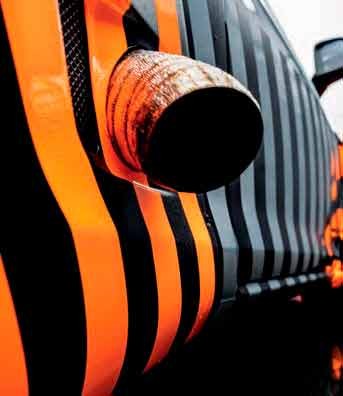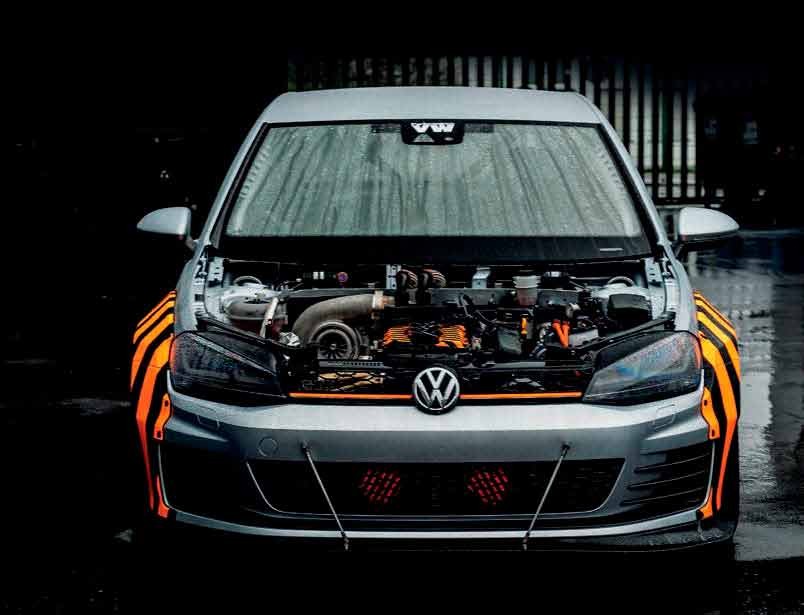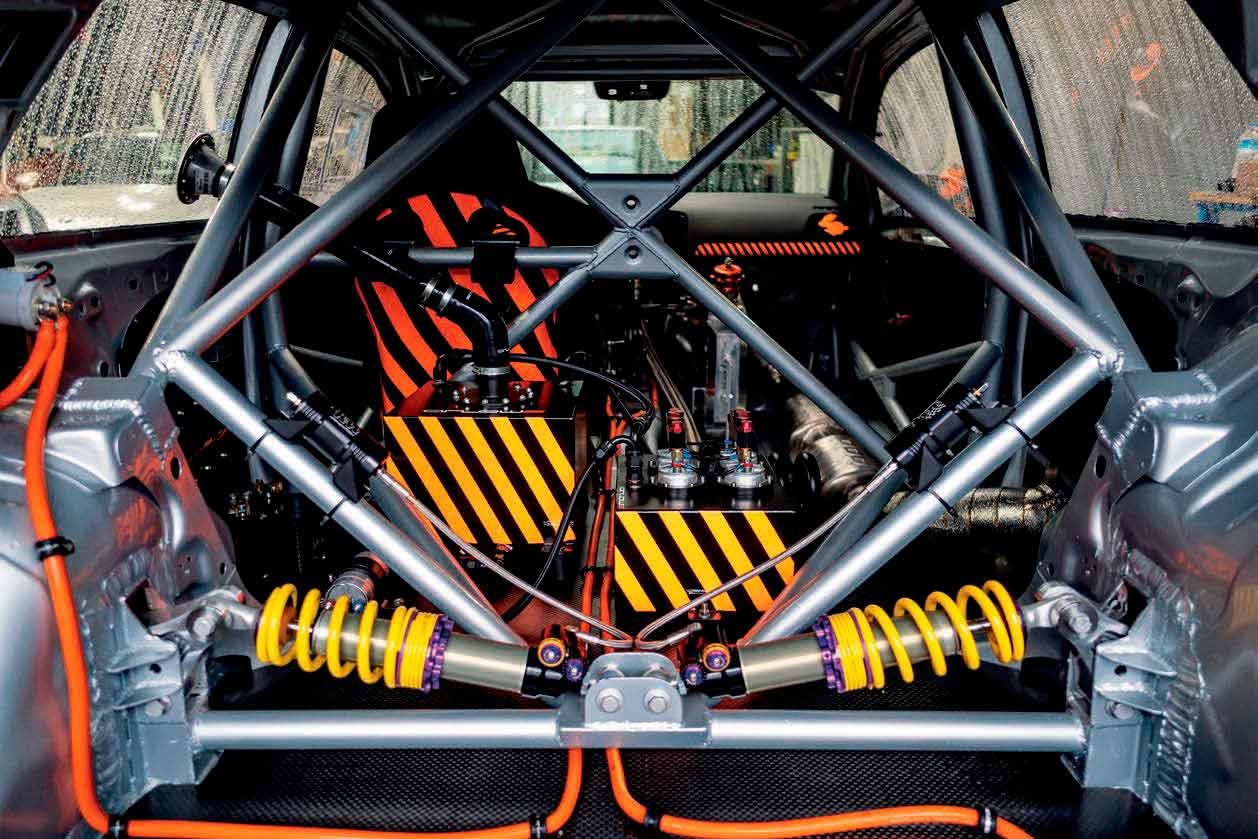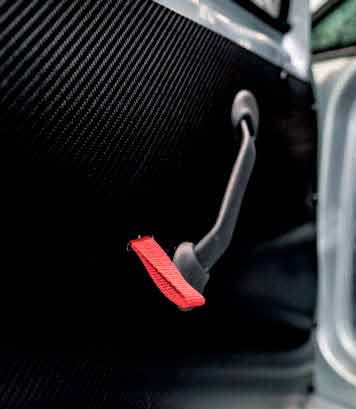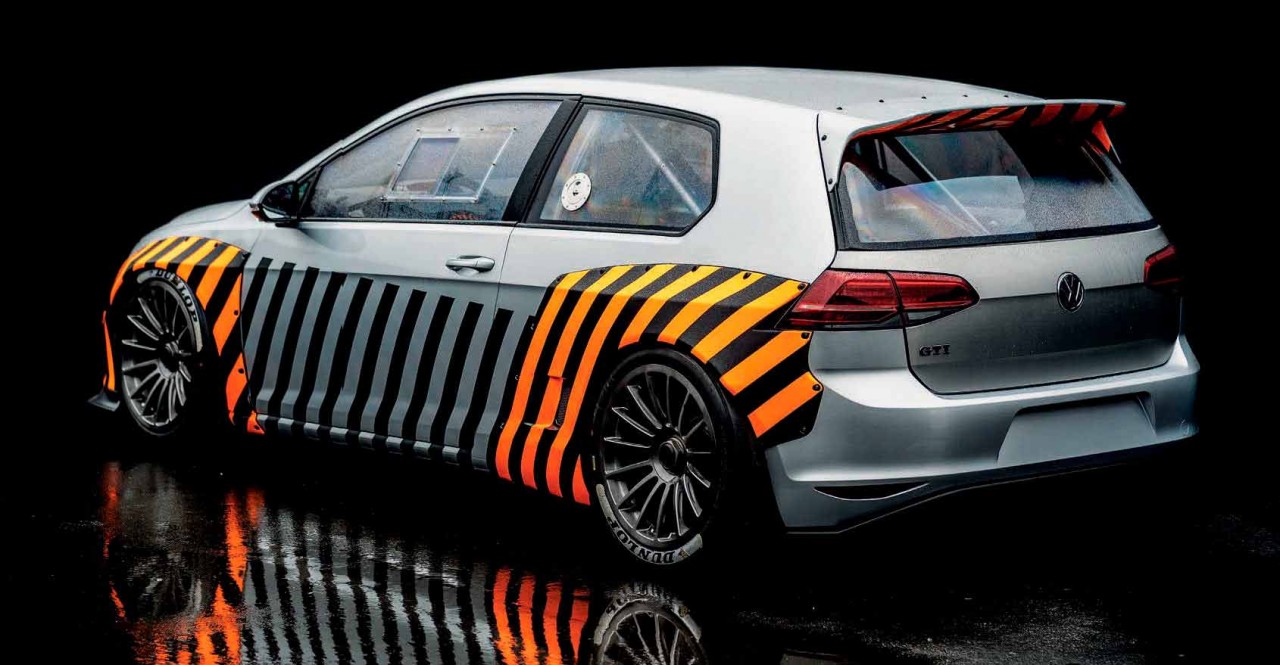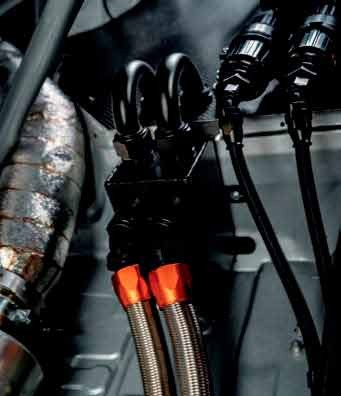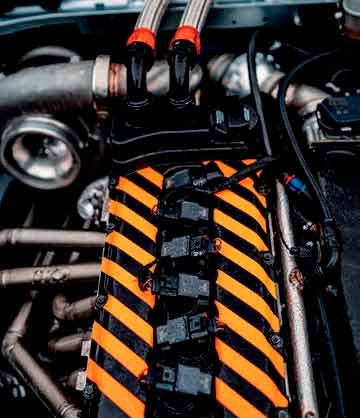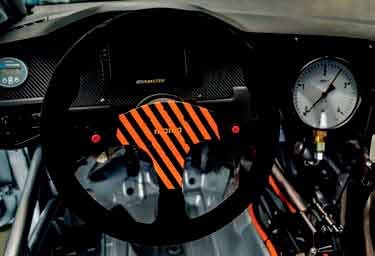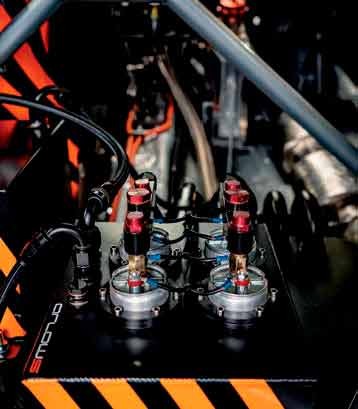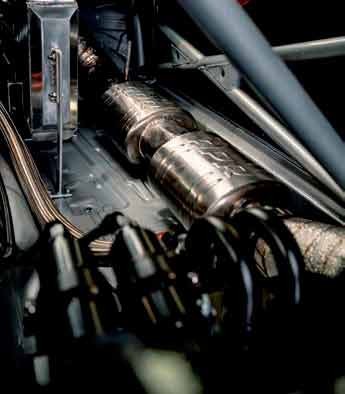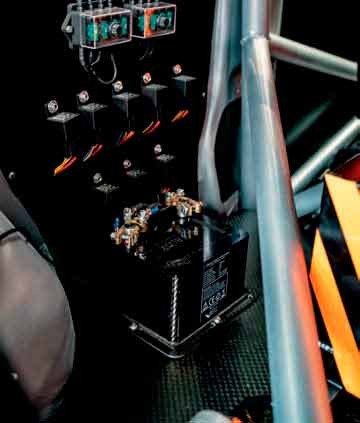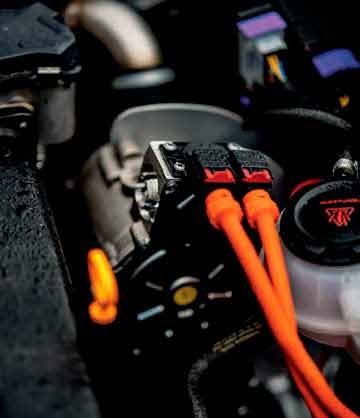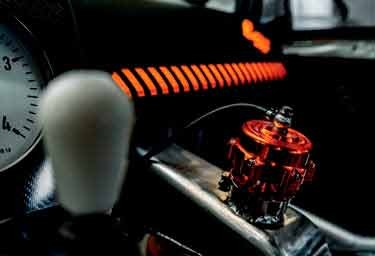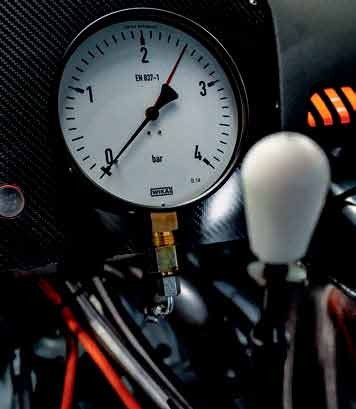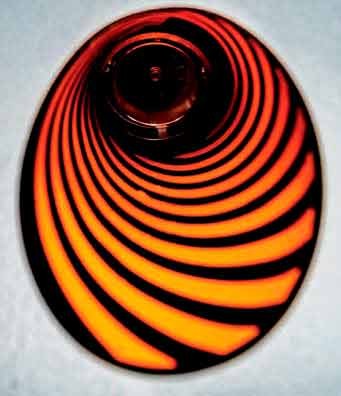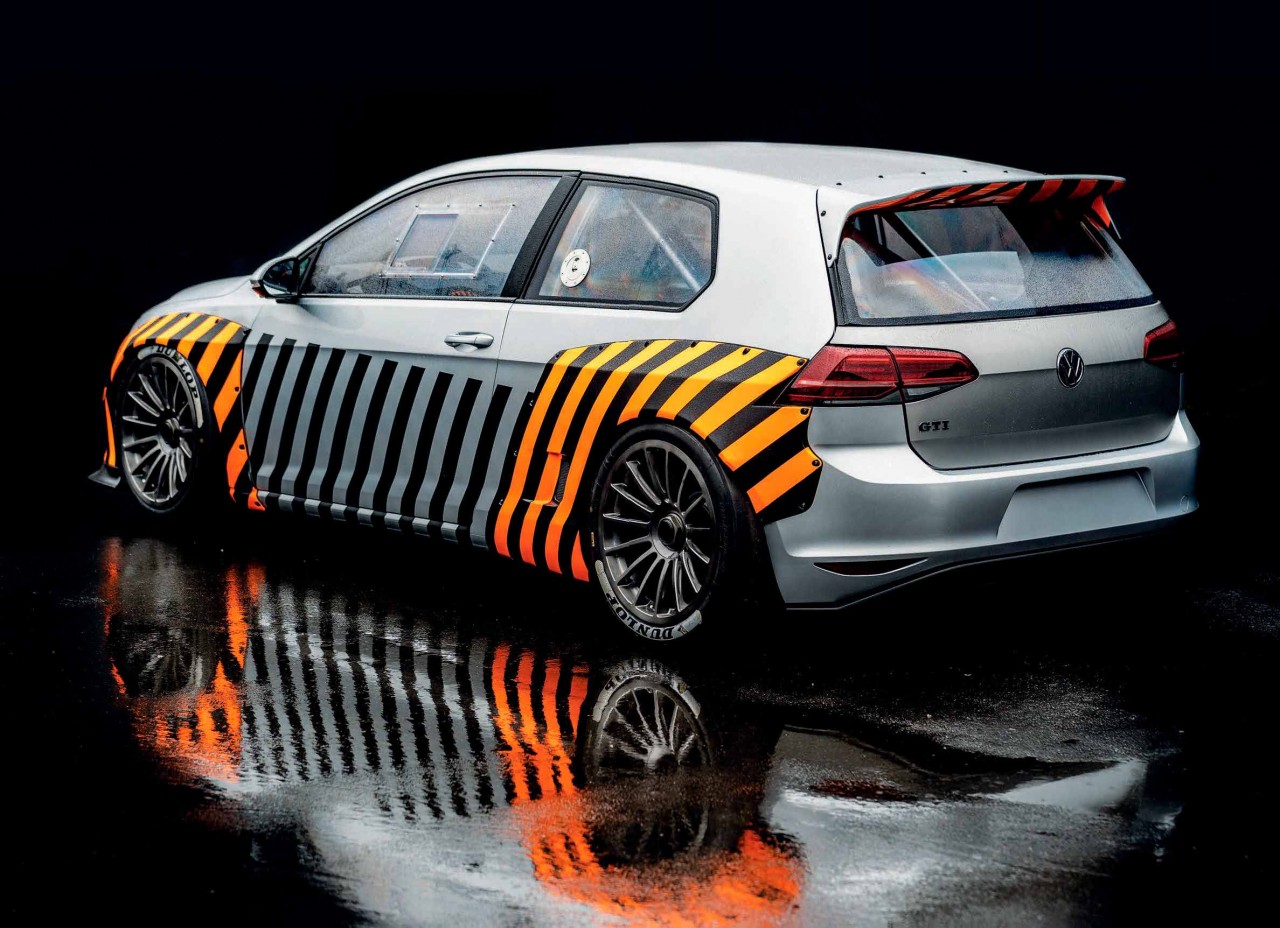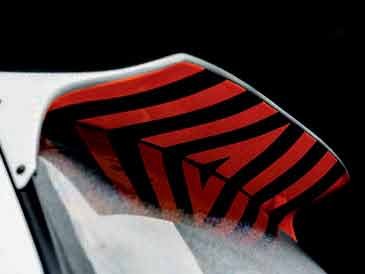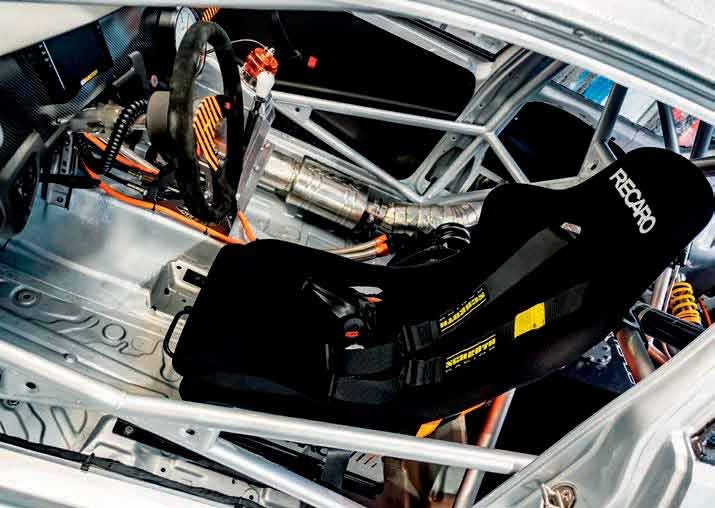JP Performance build 1000bhp part-electric high-tech Mk7 R32
SUPER GOLF FULLY CHARGED
Icons; every generation has them, and every corner of car culture has their own. Whether it’s road, race or one-off custom, they’re the stop-you-in-your tracks machines that nudge the bar a little higher and, manage to define an automotive era even decades into the future. There’s no set budget, and no set recipe, but you know them when you see them – and a lucky few of us, get to own one too.
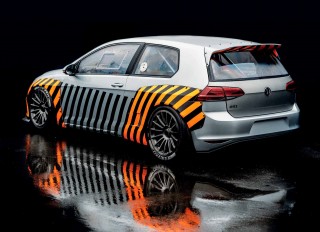
Twenty years is a long time in the automotive industry and, if you look back through magazines and show reports from the turn of the Millennium, it’s an even longer period for the modified scene. But anyone who remembers the days of neons, fibreglass and flip paints will probably also know exactly what you’re talking about if you mention Hans Dahlback. And they’ll be remembering him for all the right reasons, too.
Even in an era where subtlety was a minority interest, this works motorsport trained Swedish builder knew how to make an impact. Part Mk4 Golf, part Sport Quattro and the best part of a thousand horsepower, his signature build had the howling, flame-throwing theatre of a Group B rally car and the chassis to use it properly – as editor Elliott found during its world-exclusive PVW cover shoot. Hans unfortunately passed away recently, but the impression he left on the scene has given him a certain immortality.
Two decades later and, on an industrial estate in central Dortmund, there’s a familiar feeling of re-defined boundaries in this Mk7 Golf. A potent mix of cutting-edge engineering, Earth-shattering performance and visual aggression woven from a similar fabric. It’s a spark of inspiration coming full circle, but aided by 20 years of new technology.
“I’m a big fan of Mr Dahlback,” Jean-Pierre ‘JP’ Kraemer tells us, as his latest creation rumbles purposefully into the daylight. “I’m turning 40 this year but, when I was a young boy, I was so in love with that Dahlback Golf – the look, that side pipe, and how extreme it all was, that I had always wanted to build something like it, but using modern technology. That’s where this started.”
“On the Internet people will use the argument that it’s ‘just a Golf’, but I wanted to show everybody that a Golf can be more than that”
As toys go, the climb here has been a steep one. JP grew up like most car enthusiasts, swapping parts on remote control cars to make them faster, before eventually scaling up to the real thing once a driving licence allowed. This began with a brief career selling supercars before making the sideways step to noted Porsche tuning house 9FF, but with a nagging feeling that he’d be able to do something on his own.
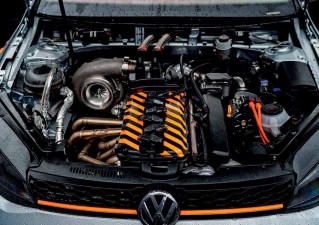
History proved him right. JP Performance launched in 2012 and he quickly made a name for himself. Not only for world-class builds – the workshop can take on almost all work in-house – but as a TV presenter, race driver and host of Germany’s most popular automotive YouTube channel, plus a sideline tour as a stand-up comedian. While most of us would be glad to cram in the mundane stuff – eating, sleeping, that sort of thing – JP is an ideas man, with the advantage that he’s got the right talent, tools and connections to bring them to life.
“The Super Golf has a 55mm longer wheelbase and the KW Competition coilovers had to be specially made”
This tends to happen swiftly. The hunt for a donor Mk7 shell began just under a year ago, uncovering what he reckons might have been the internet’s cheapest example at the time; a wellused, zero-options-ticked 1.6 TDI on aftermarket winter wheels, and a seemingly unlikely start point for what must now be one of the world’s most expensive Golfs.
“Normally, on the internet, people will use the argument that it’s ‘just a Golf’, but I wanted to show everybody that a Golf can be more than that,” he says. “I wanted to turn the Mk7 into something very, very extreme. Something that could compare, from a technology point of view, with every supercar in the world.”
The Mk7 is built on a modular platform, adaptable for pretty much any technology it had in its arsenal, but you won’t find much of that in here. Mechanically, the Super Golf’s front end is more like a larger Audi – just as Dahlback’s was 20 years previously. Beneath the bonnet is an R32 VR6 engine, albeit sourced from a low-spec Phaeton, paired with a six-speed Audi manual gearbox designed for Quattro all-wheel drive. Volkswagen didn’t fit a six-pot to the Mk7, nor did it design the body for a longitudinally-mounted drivetrain.
“Centre-lock Rotiforms make full use of that extra arch space”
There’s enough bonnet length to rotate the engine 90 degrees, but that’s where the simple surgery stops. Having stripped the front end back to its chassis rails, JP and the team offered up the engine and began unravelling the sort of packaging issues that can make the most appealing ideas lose their lustre pretty quickly. Sure, you can slot a gearbox into the transmission tunnel and close the bonnet over it too, but it does mean making do without the steering box. Hardly a minor detail.
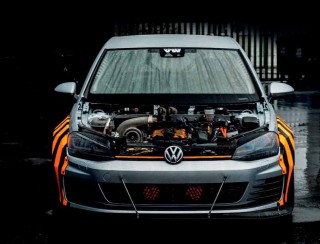
So everything beneath was adapted to fit. The subframe is custom built, its centre section cut out to make space for the gearbox, and the steering parts are lifted from an Audi 80, which also has a longitudinally-mounted drivetrain.
So the box and arms are out in front of the sump, which in turn meant the engine could be positioned similarly to a factory-fi t – no odd driveshaft angles, and no packaging issues. Of course, an extra couple of cylinders was only the starting point. The engine is working harder than it ever would have in Volkswagen’s odd-fi t luxury saloon, but it came well prepared for its future life. Its original forged crankshaft, as used in the R32, is spinning a set of JE pistons and Arlows conrods beneath a heavily-ported and polished head and some secretive top-end parts JP isn’t keen to reveal. Needless to say, the weak points and bottlenecks have been systematically eradicated. For all the headaches of re-inventing the drivetrain layout, it did offer up some more space for turbocharging. Whereas a transverse-mounted R32 engine would usually tuck the turbo under the scuttle panel, the inner wing here is taken up by a sizeable Garrett GT 47 mounted on a custom manifold and swigging fresh, cold air through a duct cut into the bonnet. Rated to well over a thousand horsepower and paired with a water-cooled intercooler – useful when there’s limited room for cooling parts up front – it’s unlikely to leave JP feeling short-changed when he finally gets this out on track.
But that’s only half of the boost-related trickery going on here. Highlighted by its high voltage cables, the opposite side of the engine bay features an electronic turbocharger from an Audi Q7 TDI. Usually part of Audi’s ‘mild hybrid’ system, which uses an electric motor-generator to assist the engine under load and store energy while slowing down, it’s an electrically-operated compressor which gives the Golf an extra shot of boost lower in the rev range. In turn, it allowed for a much larger mechanical turbocharger without the usual lag. All JP has to do is tap a button on the steering wheel. You saw it here first…
“It’s an electrically-operated compressor which gives the Golf an extra shot of boost lower in the rev range”
“The e-turbo technology was very challenging for us, especially controlling the way it divides the power. When you go on the throttle and push the button for the e-turbo, it spools, but when you let go of the button and the GT 47 takes it needed to not be pushing boost towards the e-turbocharger. We used a valve, which has a little spring inside, to control the direction the boost flows in. That solved the problem, but it was a challenging part of the build.”
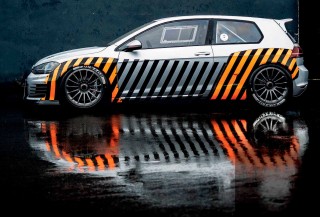
Next-level engineering doesn’t stop at the bulkhead. With ambitions to take the Golf’s power output into four figures, the bodyshell is heavily stiffened with a roll cage and the rear suspension was redesigned for a custom four-wheel drive system. It’s using a race-derived pushrod layout, with horizontally-opposed dampers inside the cabin and a Nissan R34 GT-R differential beneath the boot floor, chosen because of its compactness and tolerance of performance figures way in excess of anything with a Volkswagen badge. With the changes up front, the Super Golf has a 55mm longer wheelbase than it left the factory with, and the KW Competition coilovers had to be specially made. This might look like another example of Europe’s best-selling car, but you won’t find another one quite like it.
“The pushrod suspension means we can run wider wheels in the back,” JP continues, lifting the rain-soaked tailgate to offer a closer look. “The Golf 7 was designed to be front-wheel drive or four-wheel drive, but you can’t get wider than 10-inch wheels in the back, and even then you are limited. If you lower, a standard golf seven the rear axle or the wheel wheels don’t move in the same angle. So, the wheels go all the way to the front and the car looks a bit awkward. We wanted to show what was possible.”
That’s an experience few will get first-hand. Built as a track car, everything wrapped up within the roll cage is strictly functional. A single Recaro bucket seat, positioned within easy reach of the wheel and CAE short-shifter, feels straight out of a DTM car, while the dashboard has been reduced to a sheet of carbon fibre with the bare minimum instruments set into it. Anyone hoping for a passenger ride would need to find space between the intercooler and exhaust silencers in the footwell – the latter dumping still-burning hydrocarbons out of a hole in front of the rear wheel. No prizes for spotting the Dahlback influences there.
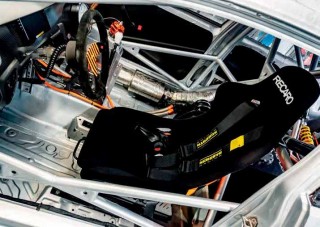
Behind the driver, the fuel system was supplied by Arlows, comprising a four-pump swirl tank and compact fuel cell, supplied via a filler neck cut into the polycarbonate side windows. The batteries – four 12-volt units wired in series to reach the same 48-volts used by the Q7’s mild-hybrid system – are slotted into a compartment beneath the boot and are charged externally, not by the alternator. Its on-board electronics are supplied by a separate Lite Blox battery, mounted alongside them.
Every component was carefully picked and placed as part of the overall package: “The engine is kind of heavy, but we used pretty big batteries to get the weight distribution back under control. There’s about 98 kilos of weight in the back of the car, but the weight distribution is 58:42% front to rear, which I’m happy with. Overall weight is still 1275kg, so we are a pretty light Golf, particularly combined with the power we have.”
A lot of its apparent weight is visual. JP upgraded to Mk7 GTI bumpers with the LED lighting from a Mk7.5, accommodating the wider front and rear track with a Rocket Bunny kit. This adds 45mm per side at the front and 75mm at the rear, with the pressure of restoring perfect wheel-tyre fitment despite the extended wheelbase. The centre-lock Rotiform DUS wheels make full use of that extra arch space, measuring 11×19 inches and wrapped in chunky Dunlop wet-weather slicks, while offering plenty of room for the six-piston front brake setup. It’s a massive clue as to the performance underneath – including the orange accents, colour-matched to those high-voltage cables.
“We are still working on some minor problems so we don’t have a power figure yet, but for sure it will be over 1,000hp,” he says, with an excited smile. But he’s patient. “It was always important to make a car better. This is a very important point of the whole modifying scene. Many cars get more extreme, but they don’t get better. For me, I wanted this to be better than it was before. That was the goal.”
It’s also the driving force behind the bar being nudged a little higher.
The Super Golf is a car built on engineering Hans Dahlback could only have imagined as he built his career-defining masterpiece in the late-1990s, and yet it feels part of the same mad lineage. A stop-you-in-your tracks machine that, years from now, will offer a snapshot of car culture 2020-style, and inspiration for a new generation too.
DUB DETAILS
ENGINE: 3189cc 24-valve VR6 (mounted longitudinally) with forged crank, JE pistons, Arlows conrods, uprated head bolts, polished and ported head, Audi Q7 TDI 48-volt e-turbo, 4x 12-volt Varta batteries in custom rear boot floor, Garrett GT47 mechanical turbo, water-air intercooler, Arlows blow-off valve, DK TurboTecnic custom manifold, custom side-exit exhaust with twin APR silencers, Arlows fuel cell and four-pump swirl pot, 1,200cc injectors, ECUmaster EMU Black ECU, slimline radiator with dual fans, 01E six-speed manual gearbox, uprated clutch and billet flywheel, custom driveshafts, CAE short-shifter, Nissan R34 rear differential, Lite Blox battery
CHASSIS: Custom JP Performance front subframe, Audi 80 steering system, custom pushrod rear suspension system, custom-made KW Competition three-way adjustable coilovers, MOV.IT six-piston calipers with 370mm discs (front), Mk7 Golf R two-piston rear calipers with 310mm discs (rear), 11×19” Rotiform DUS centre-lock wheels, 295/68 Dunlop rain slick tyres
EXTERIOR: Full Rocket Bunny wide body kit, Mk7 GTI front and rear bumpers, Mk7.5 GTI LED headlights and tail lights, polycarbonate windows with integrated fuel filler, custom bonnet air intake, aero bonnet pins, custom graphics
INTERIOR: Stripped, custom roll cage with gussetted A-pillar, Recaro Profi SPG bucket seat, Schroth harness, Momo Mod.80 suede steering wheel, ECUMaster Advanced Display Unit, Victron Energy battery monitor, carbon fibre dashboard panel, carbon fibre door cards with latch pull straps, custom battery box, carbon fibre rear floor
SHOUT: All my friends who helped with the build



